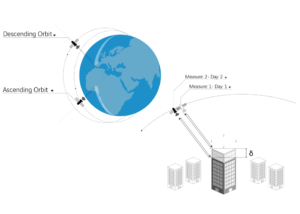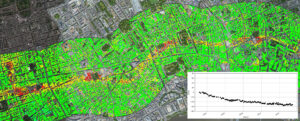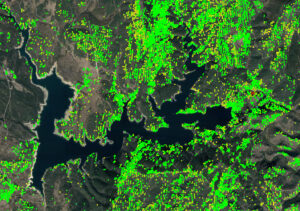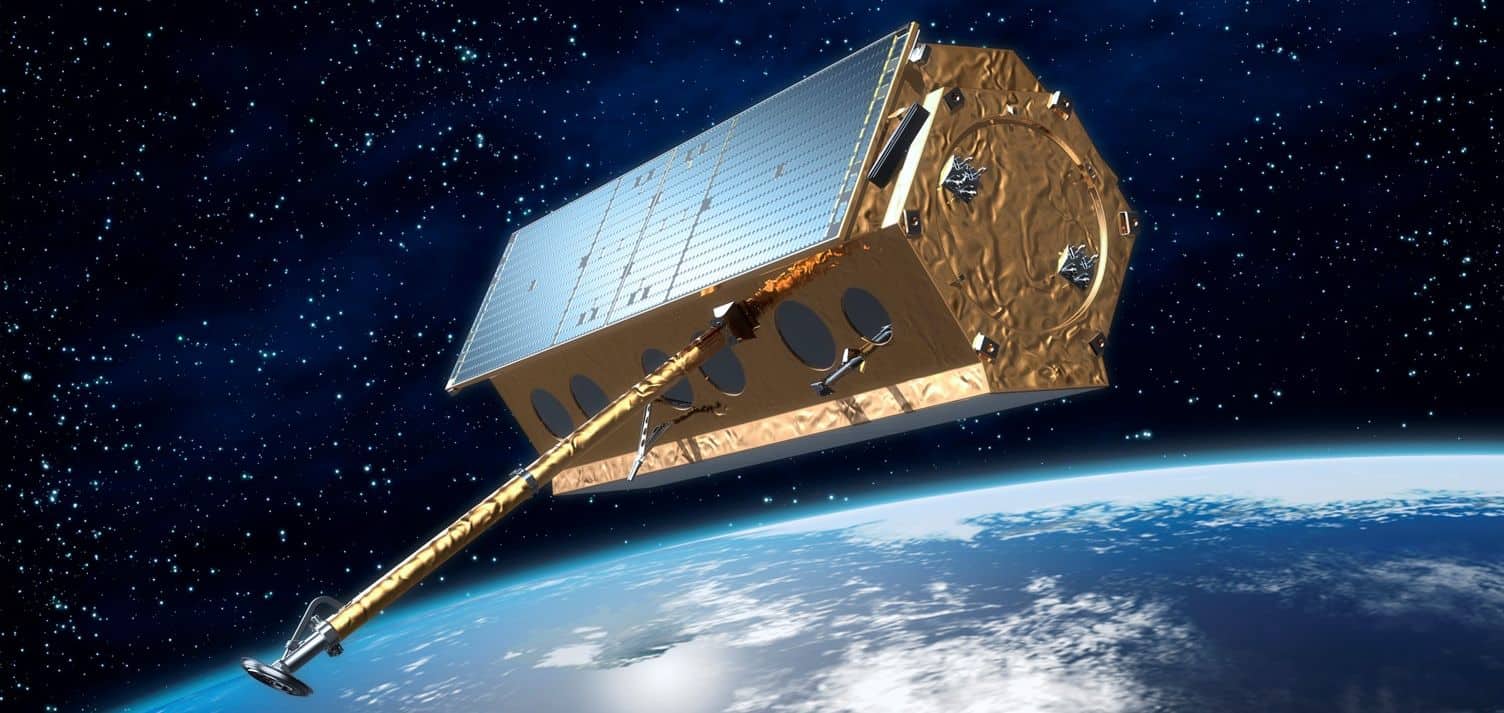ATLAS InSAR is Sixense’s innovative Interferometric Synthetic Aperture Radar (InSAR) solution that is used to measure ground deformation and structure stability using satellites.
Combining radar satellite images with advanced processing, ATLAS InSAR provides millions of measurement points used for construction or infrastructure monitoring and maintenance activities.
At all project stages – design, construction or operation – satellite monitoring provides comprehensive modelling of terrain and structure behavior over large areas. It can also provide a high resolution detailed analysis of single structures.
InSAR Satellite Monitoring is a remote sensing technology that provides accurate results without site intervention. The solution delivers an effective and cost-efficient tool for risk management and optimisation of construction monitoring and large scale asset management.
Satellite monitoring is playing an increasing role in monitoring campaigns, construction teams, asset owners and engineers to understand the impacts of natural and man-made sources of ground motion.
ATLAS InSAR solutions
How does it work?

ATLAS InSAR uses SAR interferometry (Synthetic Aperture Radar), a remote sensing technique which is capable of measuring millimetric motion of terrain and structures over very large areas.
Interferometric Synthetic Aperture Radar (InSAR) involves the use of two or more images of the same area, in different moments of time, to retreive landscape topography and associated deformation patterns.
A Synthetic Aperture Radar sensor transmits electromagnetic waves to the ground and collects it’s backscateering signal. This solution can operate during day and night under all weather conditions.
When several measurements are compared, the difference indicates ground deformation over time.
For any ground point, satellite time series’ enable the follow-up of phenomena every few days during the monitoring period.
A step further to get millimetric precision

ATLAS InSAR is Sixense’s Interferometric Synthetic Aperture Radar (InSAR) processing chain. It is used to monitor geotechnical and structural deformations.
The ATLAS processing chain is based on advanced PSI (Persistent Scatterer Interefometry) methodology and takes conventional InSAR a step forward to achieve ground motion readings to millimetric precision.
This technique requires an initial stack composed of more than fifteen SAR images.
The PSI algorithm identifies common points (Persistent Scatterers) in each image for which it will be possible to derive accurate measurements during the study period.
Delivered outputs from ATLAS processing include maps presenting accumulated displacement and mean velocity deformation throughout the study period for each measured point (PS).
Many relevant industry applications

ATLAS InSAR is a technology that is making industries and lives safer, practices more efficient, and the understanding of ground behaviour more comprehensive.
ATLAS InSAR is being used in many industry applications, from monitoring the movement of slopes, to measuring with millimetric precision the displacement of bridges, buildings, viaducts, railways, highways, airports, seaports, mines and other key infrastructure such as tailings dams.
ATLAS InSAR features & benefits
- Millimetric precision: up to 1 mm/year and 2-3 mm precision on single measurement points
- High measurement frequency: 3, 6 or 12 days between acquisitions depending on satellites
- High density of measurement points: more than 20,000 points is possible per square kilometre in urban areas
- Coverage of large areas: monitoring over remote and very extensive areas (thousands of square kilometres)
- Retrospective studies: historic ground motion analysis from 1992 using archived satellite images
- Non-invasive system: a remote solution without site intervention that is maintenance free
- On-demand monitoring: update frequency can be adjusted to the magnitude of motion and project requirements
- Web platform: a user interface enabling quick and easy interpretation of millions of measurement points
The additional benefits of using the Sixense ATLAS InSAR solution
- A unique capability to combine InSAR and ground instrumentation data
Sixense is the only supplier offering this wide range of ground and space based sensing as an integrated solution for the civil engineering industry. Sixense has more than 700 engineers worldwide dedicated to the construction sector and hold more than 10 years of expertise processing satellite radar data. This gives us a comprehensive understanding in this sector.
- ATLAS InSAR; a high quality processing chain
Sixense is always looking for new and innovative solutions to bring added value to our clients. In 2004 we started developing our own InSAR solution to provide an additional level of service to the complex issue of ground deformation. ATLAS InSAR is in constant development to keep up with new opportunities offered by the unprecedented spatial and temporal volume of Synthetic Aperture Radar (SAR) data. This will only increase with new sensors in the future.
- Advanced web platform
BEYOND Satellite is able to transform data into actionable information, customised to our client’s requirements and using cutting-edge analytical tools. Additionally, it offers the possibility to integrate auxilliary measurements from other geotechnical and structural monitoring. This results in clients receiving multi-source data in an an holistic manner to manage the risk to different assets of interest.
